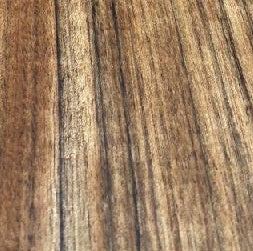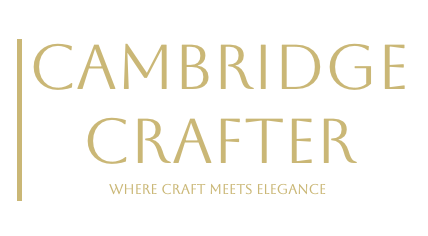
Amazique
Amazique, also known as Ovangkol or Shedua, comes from the tree Guibourtia ehie, a member of the Fabaceae family, native to tropical West Africa, including countries like Ghana, Ivory Coast, and Gabon. These trees grow in lowland rainforests and can reach heights of 100–150 feet with trunk diameters of 3–5 feet, featuring straight, cylindrical boles often clear of branches for up to 60 feet.
The heartwood of Amazique is visually striking, displaying a rich palette of golden to dark brown tones, often with a yellowish-brown base that deepens to reddish or chocolate brown with age. It’s frequently accented by darker brown to black streaks or mottled patterns, giving it a dynamic, figured appearance. The grain is typically straight to slightly interlocked, with a medium to coarse texture and a moderate natural lustre. The sapwood is pale yellow to whitish, sharply demarcated from the heartwood.
Amazique has a density of around 800–900 kg/m³, making it a hard, durable wood with good stability once seasoned. It’s resistant to wear and has moderate natural resistance to insects and moisture, though not as much as tropical hardwoods like teak. The wood works well with both hand and machine tools, though its interlocked grain can cause tearout during planing, requiring sharp tools and careful handling. It glues, stains, and finishes beautifully, often achieving a polished, glossy surface that highlights its figuring.
Known for its warm, balanced acoustic properties, Amazique is a popular choice for guitar backs, sides, and bodies, offering a tonal quality between rosewood and mahogany—rich mids with clear highs and a strong projection. It’s also used in high-end furniture, cabinetry, veneer, flooring, and turned objects like bowls or pen blanks. When worked, Amazique emits a mild, pleasant aroma, sometimes described as faintly spicy or nutty, though it’s not overpowering.
Amazique is relatively sustainable compared to other tropical hardwoods, with a stable supply from managed forests in West Africa. Its combination of aesthetic appeal, workability, and acoustic qualities makes it a versatile and sought-after material for both functional and decorative applications.
